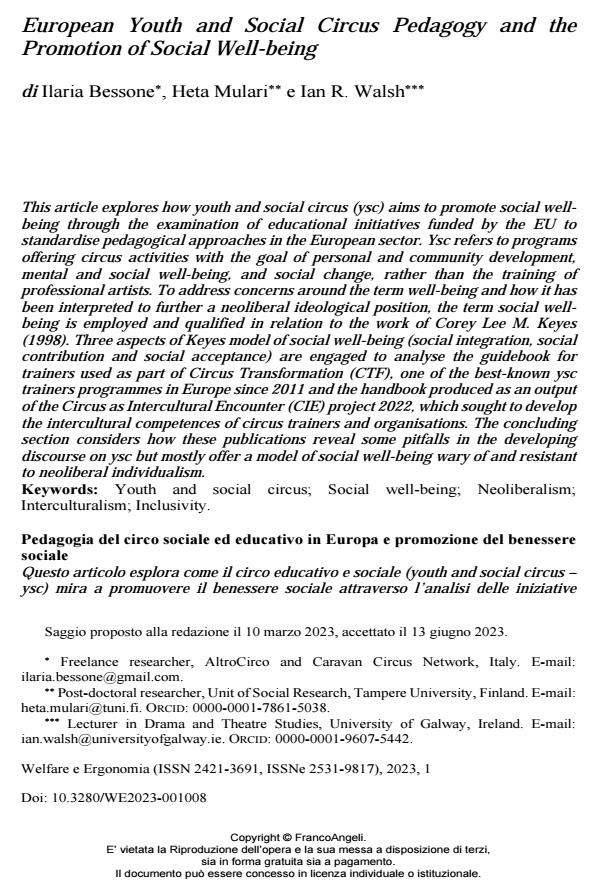European Youth and Social Circus Pedagogy and the Promotion of Social Well-being
Journal title WELFARE E ERGONOMIA
Author/s Ilaria Bessone, Heta Mulari, Ian R. Walsh
Publishing Year 2023 Issue 2023/1
Language English Pages 11 P. 97-107 File size 319 KB
DOI 10.3280/WE2023-001008
DOI is like a bar code for intellectual property: to have more infomation
click here
Below, you can see the article first page
If you want to buy this article in PDF format, you can do it, following the instructions to buy download credits

FrancoAngeli is member of Publishers International Linking Association, Inc (PILA), a not-for-profit association which run the CrossRef service enabling links to and from online scholarly content.
This article explores how youth and social circus (ysc) aims to promote social well-being through the examination of educational initiatives funded by the EU to standardise pedagogical approaches in the European sector. Ysc refers to programs offering circus activities with the goal of personal and community development, mental and social well-being, and social change, rather than the training of professional artists. To address concerns around the term well-being and how it has been interpreted to further a neoliberal ideological position, the term social well-being is employed and qualified in relation to the work of Corey Lee M. Keyes (1998). Three aspects of Keyes model of social well-being (social integration, social contribution and social acceptance) are engaged to analyse the guidebook for trainers used as part of Circus Transformation (CTF), one of the best-known ysc trainers programmes in Europe since 2011 and the handbook produced as an output of the Circus as Intercultural Encounter (CIE) project 2022, which sought to develop the intercultural competences of circus trainers and organisations. The concluding section considers how these publications reveal some pitfalls in the developing discourse on ysc but mostly offer a model of social well-being wary of and resistant to neoliberal individualism.
Keywords: Youth and social circus; Social well-being; Neoliberalism; Interculturalism; Inclusivity.
- ‘Soft Rebellion’: Flow art, critical play, and wellbeing in the city Heta Mulari, Maaria Hartman, in DIY, Alternative Cultures & Society /2024 pp.296
DOI: 10.1177/27538702241276230
Ilaria Bessone, Heta Mulari, Ian R. Walsh, European Youth and Social Circus Pedagogy and the Promotion of Social Well-being in "WELFARE E ERGONOMIA" 1/2023, pp 97-107, DOI: 10.3280/WE2023-001008